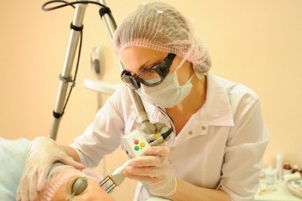
A laser is used for fractional rejuvenation. This is a highly complex procedure that solves a wide variety of skin problems that are inevitable as the body ages. It requires a high level of professionalism from the specialist who carries it out. Only a specialist with medical training and completed courses in working with laser devices has the right to perform laser rejuvenation. If you do the procedure in a questionable clinic with an unqualified beautician, then instead of the desired rejuvenation, you can get a negative effect.
Fractional laser treatment is a great option for those looking for ways to rejuvenate the face without surgery. By the way, this method is used not only on the face, but also on the body. With a laser in particular, scars and stripes can be made invisible. Therefore, laser rejuvenation is interesting for those who have long been interested in the problem of removing stretch marks on the body.
varieties of fractional laser tapering
The fractional laser does not send a single beam, but many microscopic beams, so that you can act finer and finer on the skin.
Fractional laser tapering is divided into two types:
- The first type of fractional rejuvenation is often referred to as laser treatment. During such resurfacing, the laser removes very small areas of the top layer of skin that are spaced apart from one another. This activates the regeneration processes in the skin. This procedure uses a carbon dioxide laser.
- The second type of fractional rejuvenation is the effect of the finest rays on the skin areas, which are at a precisely defined depth. At the same time, the skin surface is not exposed to any injuries, and collagen production is activated in the deep layers of the skin and the areas of skin removed by the laser are filled with new cells.
Different clinics use different types of lasers, but the principle of the laser method of rejuvenation is the same in all cases: inflicting controlled damage to the skin that stimulates active recovery and renewal.
In each special case, the doctor can see which laser technology is best suited. Before each procedure, the laser is set individually for each patient.
Skin care after fractional skin rejuvenation

The doctor who performed the procedure will explain how to care for your skin after laser rejuvenation. The choice of cosmetic products depends on the type of skin, its individual characteristics, as well as the tasks and scope of the procedure being carried out.
On days 2-3 after the session, a crust forms on the skin, which is shed within 3-4 days. At this time it is necessary to use the cream recommended by the doctor. Then it is necessary for 1-2 months to apply a good sunscreen to the skin before going outside and to use a nourishing regeneration cream at night.
It is important that laser rejuvenation not only corrects existing age-related changes, but also further slows down the aging process itself and triggers the mechanism of skin cell renewal.
For whom is fractional rejuvenation suitable and with which processes is it combined?
The procedure is only ever carried out after prior consultation with a specialist. In the case of pronounced age-related changes, laser treatment is most appropriate and not laser rejuvenation. In some cases, plastic surgery is not possible at all: blepharoplasty, endoscopic face lift, or the insertion of sutures to tighten. But here too, hardware technologies, especially laser rejuvenation, help to improve and maintain the effect.
Plasmolifting and mesotherapy are perfectly combined with laser techniques, including bio-revitalization with hyaluronic acid.
The laser rejuvenation procedure is not suitable for pregnant and breastfeeding women, people with cancer, diabetes, severe high blood pressure, psoriasis and dermatoses. Herpetic rashes and inflammatory processes in the affected area are also a contraindication to the procedure. Laser rejuvenation is not recommended for people with a family history of keloid scars or vitiligo.























